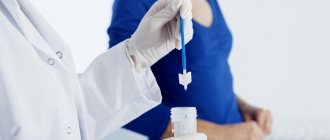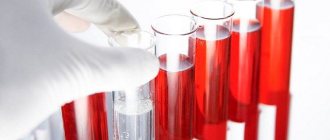Fibrocystic mastopathy of the mammary glands is a condition characterized by the appearance of lumps in the breast. Mastopathy develops in more than 50% of women aged 18 to 55 years.
Why does this problem occur? What to do if you have mastopathy? How is this disease diagnosed and treated?
Fibrocystic mastopathy: causes, symptoms, diagnosis
Any changes in breast tissue occur under the influence of hormones, or rather, with abnormal changes in hormonal levels. With prolonged hormonal imbalance (for example, excess estrogen), mastopathy develops.
What causes hormonal imbalances?
- Gynecological diseases.
- Disorders of the thyroid gland.
- Diabetes.
- Disorders of fat metabolism (adipose tissue produces estrogens).
- Liver diseases.
- Frequent stress.
- Hereditary diseases of the endocrine system.
- Abortion.
- Lack of sex life.
- Harmful working conditions.
Symptoms of mastopathy
For mastopathy, the most typical complaints are:
- breast tenderness,
- a feeling of increasing their volume,
- engorgement and swelling of the glands,
- the presence of clear or colostrum-like fluid discharge from the nipples of the mammary glands.
Pain may radiate to the armpits, shoulder and shoulder blade. The most common is a combination of symptoms of mastopathy and premenstrual syndrome. The main complaints in these conditions are: headache (often migraine-type), swelling of the face and limbs, nausea, less often vomiting, impaired bowel function, flatulence. With the neuropsychic form of premenstrual syndrome, complaints such as irritability, depression, weakness, tearfulness and aggressiveness may be associated. Difficulties in determining the cause of pain are due to the fact that pain can occur not only with pathology of the mammary gland, but also with cervicothoracic osteochondrosis, radiculoneuritis, intercostal neuralgia and is eliminated with appropriate therapy.
Diagnosis of the disease
To make a diagnosis, the following procedures are performed (not all of them are mandatory):
- taking anamnesis;
- palpation of the mammary glands;
- mammography;
- Ultrasound of the mammary glands;
- MRI;
- examination of the endocrine system;
- blood analysis.
If large lumps are detected in the breast, a breast biopsy may be additionally prescribed. A needle is inserted into the breast and a microscopic piece of tissue is removed for analysis. This study allows you to evaluate the condition of the cells and determine whether the tumor is benign or malignant.
general information
The formation of the mammary glands begins in the perinatal period, at 6 weeks from conception. From birth to puberty, the ducts lengthen and the nipples increase in size. When puberty begins, the ducts branch, glandular lobules are formed, and the morphological structure of the organ changes. The intercellular and interlobar segments consist of connective tissue. These areas are subject to hormonal changes.
Full development of the mammary glands ends after puberty and the second trimester of pregnancy. During the period from the end of puberty to the third trimester of pregnancy, epithelial tissues are considered immature. They cannot produce progesterone, which increases the risk of developing breast cancer.
Cyclic physiological processes in the body have a huge impact on changes in connective tissues. The structure of the mammary glands is constantly changing. This does not depend on the period of life and age. Often, dysplastic processes develop under the influence of such factors:
- sensitivity to hormonal levels;
- hormones produced by the thyroid gland;
- presence of sexual life and satisfaction with it;
- emotional background.
Benign changes in the mammary glands are called mastopathy or fibrocystic disease. The anatomical features and clinical manifestations of these changes differ significantly. Malignancy occurs, which is manifested by the appearance of pathologically altered tissues and cells. There is a risk of cells degenerating into malignant ones, so experts consider mastopathy as a precancerous disease.
Types and phases of mastopathy
There are three forms of mastopathy:
- Fibrous form - characterized by the formation of multiple small compactions throughout the mammary gland. This type of mastopathy is the least dangerous and has a good prognosis for treatment.
- The cystic nodular form means that cysts (nodules) of significant size have formed in the breast, which compress the vessels, causing swelling, poor circulation in the tissues of the mammary glands and other serious complications.
- The mixed form is a combination of fibrous and cystic nodular forms of the disease.
There are also three clinical phases of mastopathy. They differ in age range and severity of the disease:
- Phase I. Age from 20 to 30 years. The menstrual cycle is regular or slightly shortened; 5–7 days before menstruation, breast tenderness, thickening and increased sensitivity are felt.
- Phase II. Age from 30 to 40 years. 2-3 weeks before menstruation, pain and heaviness appear in the chest. Small, painful, compacted areas are also felt in the mammary gland.
- Phase III. Age after 40 years. Chest pain is not too intense and occurs periodically. Cystic formations up to 3 cm in diameter are palpable, and a brown-green secretion is released from the nipples.
Fibrocystic mastopathy is dangerous because glandular tissue can degenerate into malignant tumors due to hormonal imbalances.
Mastopathy - symptoms and treatment
A mammologist treats mastopathy. First of all, it consists in finding and eliminating the causes of mastopathy: nervous disorders, ovarian dysfunction, gynecological diseases, liver diseases, etc.
The main objectives of mastopathy treatment are: to reduce pain, reduce cysts and fibrous tissue in the mammary gland, prevent relapses of tumors and oncopathology, and also correct hormonal status (after detecting hormonal disorders and consulting a gynecologist-endocrinologist).
If the patient’s body has concomitant inflammatory diseases of the female genital area, endocrine diseases (hypothyroidism, nodular goiter, diabetes mellitus, etc.), then treatment must be carried out together with a gynecologist, endocrinologist and therapist.
Treatment of mastopathy can be divided into two main types - conservative (drug) and operative (surgical) treatment. Most often, conservative treatment of MFC is performed. In the event that there are large cysts and significant compactions that are not amenable to conservative treatment or if therapy is unsuccessful, surgical treatment is performed.
Conservative treatment
The usual tactics for managing women suffering from mastopathy were developed back in the 60s and 70s, so at the moment they are not very effective. New drugs introduced into practice have increased the effectiveness of treatment at the initial stage. However, these drugs turned out to be ineffective for women with fibrocystic mastopathy who had a history of close relatives (mother, grandmother, sister, aunt) suffering from breast cancer.
For drug treatment, the following drugs are used:
- non-steroidal anti-inflammatory painkillers - relieve pain and help restore sleep;
- vitamin complexes - strengthen the immune system;
- homeopathic remedies - strengthen the body's defenses;
- antidepressants and sleeping pills - necessary for depression, irritability, insomnia (symptoms accompanying fibrocystic mastopathy);
- iodine preparations - it is especially important to use them at the initial stage of treatment, as they improve the functioning of the thyroid gland, contribute to the normal functioning of the reproductive system and regulation of the menstrual cycle;
- diuretics [2] - eliminate swelling of the breast tissue, improve the outflow of blood through the veins and its circulation in the breast tissue. These drugs also reduce the levels of potassium and magnesium in the blood, without which the normal functioning of the cardiovascular and nervous systems is difficult. Therefore, diuretics are usually taken together with drugs containing potassium and magnesium.
Hormone therapy
This treatment method is prescribed in complex cases of FCM. Normalization of hormonal balance is aimed, first of all, at eliminating pain. Stabilizing the condition of the endocrine glands and gastrointestinal tract helps prevent the appearance of new formations, reduce the size of existing ones, and reduce or eliminate pain. However, proliferative forms of fibroadenomatosis and fibrocystic or fibromatous mastopathy do not respond well to this method of treatment.
The use of hormonal drugs is prescribed individually and is carried out under the supervision of the attending physician. Medicines are used in the form of tablets, injections or gels that are applied to the mammary gland. Patients of reproductive age may be prescribed hormonal contraceptives. Systemic hormone therapy should be carried out by a highly qualified specialist who can monitor hormonal status.
Hormonal therapy involves the use of antiestrogens, oral contraceptives, gestagens, androgens, prolactin secretion inhibitors, gonadotropin releasing hormone analogues (LHRH). Treatment with analogues
LHRH is applicable to women with mastodynia (breast pain) in the absence of effective treatment with other hormones. The action of gestagens is based on an antiestrogenic effect at the level of breast tissue and inhibition of the gonadotropic function of the pituitary gland. Their use in complex therapy of mastopathy increased the therapeutic effect to 80%.
For the treatment of mastopathy in women under 35 years of age, oral monophasic combined estrogen-progestogen contraceptives are used. Their contraceptive reliability is almost close to 100%. Most women, while using these drugs, experience a significant reduction in pain and engorgement of the mammary glands, as well as restoration of the menstrual cycle.
Currently, a fairly effective external drug is used in the treatment of mastopathy. It contains micronized progesterone of plant origin, identical to endogenous. The drug is released in the form of a gel. Its advantage lies precisely in its external use - this way the bulk of progesterone remains in the tissues of the mammary gland, and no more than 10% of the hormone enters the bloodstream. Thanks to this effect, there are no side effects that occurred when taking progesterone orally. In most cases, continuous application of the drug 2.5 g to each mammary gland is recommended, or its application in the second phase of the menstrual cycle for 3-4 months.
Non-hormonal therapy
Methods of non-hormonal therapy are: diet correction, correct selection of a bra, the use of vitamins, diuretics, non-steroidal anti-inflammatory drugs that improve blood circulation. Latest Non-steroidal anti-inflammatory drugs have been used for a long time in the treatment of diffuse mastopathy.
Indomethacin and brufen, used in the second phase of the menstrual cycle in the form of tablets or suppositories, reduce pain, reduce swelling, promote the resorption of lumps, and improve the results of ultrasound and x-ray examinations. The use of these drugs is especially indicated for the glandular form of mastopathy. However, for most women, homeopathy or herbal medicine may be sufficient.
Conservative treatment of mastopathy should consist not only of long-term use of sedatives, but also of vitamins A, B, C, E, PP, P, since they have a beneficial effect on breast tissue:
- vitamin A reduces cell proliferation;
- vitamin E enhances the effect of progesterone;
- vitamin B reduces prolactin levels;
- vitamins P and C improve microcirculation and reduce local swelling of the mammary gland.
Since mastopathy is considered a precancerous disease, long-term use of natural antioxidants is required: vitamins C, E, beta-carotene, phospholipids, selenium, zinc.
In addition to vitamins and sedatives, patients are advised to take adaptogens for four months or more. After a four-month course, the use of the drug is stopped for a period of two months, and then the treatment cycle is resumed for four months. A total of at least four cycles must be carried out. Thus, the full course of treatment may take approximately two years.
Diet for mastopathy
When treating mastopathy, it is necessary to improve the functioning of the digestive system.[1] Therefore, recovery can be accelerated by following a special diet. To do this, you need to reduce your calorie intake by eliminating carbohydrates. First of all, it is important to completely get rid of the consumption of easily digestible carbohydrates (sugar, honey, jam and flour products) and increase the proportion of vegetables, unsweetened berries and fruits consumed.
In case of mastopathy that has developed as a result of problems with the thyroid gland, it is necessary to limit the consumption of meat dishes, since protein stimulates the release of thyroid hormones, on which the level of the female sex hormone, estrogen, depends.
If mastopathy appears against the background of hypertension, then it is necessary to limit the consumption of fats, especially butter and lard, to reduce hormonal stimulation of the breast.
To provide the body with the necessary amount of calcium, which regulates the functions of the hormonal glands and has an anti-inflammatory and anti-edematous effect, you should consume kefir, yogurt and cottage cheese. Among other things, it is advisable to include in your diet seafood that contains iodine - fish, squid, shrimp and seaweed. This trace element is also present in large quantities in walnuts and mushrooms.
Treatment with folk remedies
In addition to the general course of treatment, you can also take herbal decoctions that help improve sleep and relieve pain, have a diuretic effect and contain beneficial elements.
Surgery
Surgical removal of affected tissue is prescribed in the following cases:
- rapid growth of the tumor;
- malignant degeneration of mastopathy detected by biopsy.
During the operation, a separate sector of the mammary gland is removed, in which cysts and lumps are found (sectoral resection). The operation lasts 40 minutes under general anesthesia.
After surgery, antibiotics and vitamins are prescribed. If necessary, pain relief and sedatives are administered. Hormone therapy may be used to prevent relapses. In this case, patients need to treat the underlying disease that caused the imbalance of hormones.
For large cysts, laser coagulation of these formations is possible. This technique is quite young and not widely used due to expensive equipment. For this procedure, a modern BioLitec laser device is used, which allows coagulation of the cystic formation without incisions or anesthesia. Also, with this procedure there is no risk of infection; a stay in an inpatient department is not required.
Thermal procedures, including physiotherapy, are not recommended for the treatment of FCM, as they can intensify inflammatory processes.
Contraindications to treatment
Hormonal treatment is contraindicated in cases of suspected malignancy, allergies and individual intolerance to drugs. In addition, each medicine has its own contraindications - for example, hormonal contraceptives are contraindicated for bleeding disorders, liver diseases and varicose veins. Therefore, if you have chronic diseases, it is important to tell your doctor about them.
Surgery is indicated for suspected malignant tumors. In other cases, diffuse FCM is treated conservatively.
Fibrocystic mastopathy: treatment and prevention
At an early stage, the disease does not bring much discomfort to the woman. Many don’t even turn to specialists. Seals can also resolve on their own due to natural hormonal changes. But still, it’s better not to risk your health and your future: if you find a lump in your breast that does not disappear during the cycle, you should see a doctor.
To treat mastopathy, specialists use various methods, depending on the form and stage of the disease. Drug therapy may include taking various drugs:
- hormonal drugs,
- diuretics and sedatives;
- anti-inflammatory drugs;
- agents that regulate tissue proliferation (for example, indole-3-carbinol);
- antioxidants (eg, resveratrol, vitamin E, beta-carotene);
- hepatoprotectors;
- iodine preparations.
Some remedies can combine several components of therapy for mastopathy. For example, the drug Imaston contains two active components: indole-3-carbinol and resveratrol in effective quantities. Together, they slow down cell proliferation, protect breast tissue from the harmful effects of excess estrogen, and help destroy cells that divide incorrectly.
What forms can fibrocystic disease have?
Most often, mastopathy is diffuse in nature and manifests itself:
- predominance of the glandular component (edema, proliferation of glandular tissue) - the most favorable form;
- the predominance of the fibrous component (swelling, enlargement of interlobular connective tissue septa, their pressure on the surrounding tissue, narrowing of the lumen of the ducts, up to their complete fusion;
- the predominance of the cystic component (the presence of one or more elastic cavities filled with liquid contents, clearly demarcated from the surrounding tissues of the gland);
- mixed form (increased number of glandular lobules, proliferation of connective tissue interlobar septa).
A less favorable form of mastopathy is nodular. In this form, as a rule, against the background of the changes described above, there is the presence of one or more nodes, most often representing an adenoma or fibroadenoma.
Fibroadenoma is a fairly common benign tumor of the mammary glands. Occurs at any age, but more often in 20-40 years. In some cases, especially in adolescents, fibroadenomas can grow quickly and reach significant sizes (up to 10-15 cm). According to various authors, the degeneration of benign fibroadenoma into a malignant breast tumor occurs in 1.5-2%.
Also, the nodular form can be represented by atypical hyperplasia (proliferation of glandular tissue). The percentage of degeneration of this nodular formation increases to 20%.
It is also worth recalling a very special manifestation of mastopathy - bloody discharge from the nipple of the mammary gland. As a rule, the cause of such discharge is an intraductal formation (papilloma), which can ulcerate and bleed. Such symptoms should be a serious cause for concern for a woman and promptly seek medical help.
Is it possible to independently distinguish mastopathy from oncology?
Only a specialist can make an accurate diagnosis. But there are dangerous symptoms that indirectly indicate breast cancer and require urgent medical attention. These include:
- seals in the mammary gland, tightly fused to the surrounding tissues. Malignant formations differ from benign ones in that they do not move during palpation, do not change their consistency or shape;
- discharge of blood from the nipples;
- change in the appearance of the breast: retraction of the nipples, redness, blueness, hyperemia, peeling, itching, thickening of the skin;
- a strong increase in breast size in a short time;
- compactions in the axillary lymph nodes.
Stitching, pressing, shooting pains in the mammary gland are not signs of cancer. Pain in the mammary gland can be caused by various diseases. For example, pain in the left chest of a stabbing nature, which radiates to the scapula, often occurs with radicular syndrome. This is a neurological condition that requires medical attention. But there is no need to be afraid of these pains; they have nothing to do with oncology.
Every woman should undergo a breast ultrasound or mammogram annually. This type of diagnosis is a screening for breast cancer. Oncology is a sluggish disease that can be asymptomatic for a long time. For example, a malignant tumor measuring 2-3 mm will not manifest itself for another year and a half. The success of oncology treatment directly depends on its timely diagnosis: the earlier the pathology is detected, the higher the likelihood that the person will recover!
Prevention of mastopathy
- healthy lifestyle: no injuries to the mammary glands, an active lifestyle, good nutrition, sleep and rest, no stress;
- the right bra: the wrong choice of shape and size can cause excessive stress on some ligaments and muscles and even deformation of the breast. Particular care must be taken when selecting a bra for women with large mammary glands;
- timely examination of the mammary glands: preventive self-examination at least once a month, and with age, more frequent visits to the mammologist;
Diagnosis of mastopathy
- Mammography is an X-ray image of the mammary glands in frontal and lateral projections. This is the main way to diagnose breast diseases. Performed in the first phase of the menstrual cycle. If cancer is suspected, the study does not depend on the day of the cycle. Every woman between 35 and 40 years old is recommended to undergo such an examination. Women aged 40 to 50 years should have a mammogram every year or at least once every two years, women over 50 years old - strictly annually.
- Ductography is an x-ray examination with the introduction of a contrast agent into the milk ducts. A similar study is carried out for bloody or serous discharge from the nipple.
- Ultrasound – also performed in the first phase of the menstrual cycle, except in cases of suspected cancer.
- Pneumocystography – in the presence of mammary gland cysts. The cyst is punctured and the contents are sucked out. After this, the cyst cavity is filled with gas and photographs are taken in frontal and lateral projections. The gas resolves after a week or a week and a half. Often after this procedure the cyst resolves.
- Cytological examination of the breast. A swab of nipple discharge is taken.
- Puncture. Gives a definitive diagnosis.
- Sectoral resection of the mammary gland. Removal of the area with the neoplasm. It is used to establish a more accurate diagnosis in doubtful cases, as well as for the treatment of nodular benign formations.
- Additional research methods: thermography (recording skin temperature on photographic film), computed tomography and MRI.
- Self-examination of the mammary glands also plays an important role.
Breast mastopathy and pregnancy
Many experts believe that pregnancy and subsequent childbirth can prevent mastopathy and even breast cancer. Indeed, in many cases, pregnancy and breastfeeding are a good way to get rid of the disease. But often this diagnosis is accompanied by other dangerous disorders that pregnancy and childbirth will not relieve: diseases of the thyroid gland, liver, and pelvic organs.
During pregnancy, hormonal changes occur, which cause renewal of epithelial cells and promote the production of antibodies that protect against cancer cells.
It is impossible not to note the importance of breastfeeding after childbirth. The risk of developing mastopathy increases if it stops before 3 months after birth.
Remember that pregnancy is not a panacea, and if you experience any pain in the mammary glands, you should consult a doctor!
Causes of mastopathy
Mastopathy is a fibrocystic disease that is accompanied by tissue changes. It occurs as a result of a violation of the normal balance of hormones.
The cause of the onset of the disease is a neurohumoral factor. “Neuro” means that disorders of the psycho-emotional state are triggered as a trigger for the disease: neuroses, psychoses. “Humoral” shows that the underlying causes lie in the work of biologically active substances (in this case, hormones).
Treatment of mastopathy
The only form of mastopathy that is dangerous and requires treatment, including surgery, is the nodular form of proliferative mastopathy. In other cases, mastopathy does not pose a threat to women and does not require treatment. Therapy should be aimed not at mastopathy, but at the source of the disease. For example, if the cause of mastopathy is endometriosis, then it is necessary to eliminate it. If endometriosis becomes chronic, it will be much more difficult to cope with.
All that is required of a woman with cystic fibrous mastopathy is to undergo a breast examination once a year. Women under 40 undergo an annual breast ultrasound, and older women undergo mammography. Mastopathy does not affect the quality of life in any way: you can play sports, travel, plan a pregnancy, and have children with it.
To relieve the unpleasant symptoms that occur before menstruation, you can use any painkillers. For example, swelling of the mammary gland is well eliminated by green tea, which removes excess fluid from the body.
Types of mastopathy
- nodular – single lumps were found in the mammary gland;
- diffuse - many changes - compactions - form in the mammary glands;
- fibrocystic - a type of diffuse - is accompanied by the presence of cysts, fibroadenomas, intraductal papillomas of the mammary gland.
When consulting with patients, specialists from the NEARMEDIC network of clinics talk about the most common risk factors for the development of mastopathy:
- abortion;
- infectious diseases;
- emotional overload;
- lack of breastfeeding;
- insolation;
- smoking and alcohol abuse.
It is not mastopathy itself that is dangerous, but the accompanying risk of severe complications and the development of tumors.
Further tactics
Due to the fact that cancer develops more often against the background of fibrocystic mastopathy, patients with this pathology should regularly visit a mammologist, even in the absence of complaints. Preventive examinations and instrumental examinations will allow you to monitor the course of the disease.
There is still no unified tactics for the treatment of mastopathy. It can be conservative (including hormonal) and surgical. Conservative treatment is aimed at eliminating the symptoms of the disease and can be represented by analgesic, anti-inflammatory and immunomodulatory therapy.
The question of prescribing hormonal therapy is decided individually. Progestogens are usually prescribed. They do not have a negative effect on normal breast tissue, but have a therapeutic effect in proliferative processes. To eliminate cyclical fluctuations in hormonal status, combined oral contraceptives can be prescribed. [1] (pages 23-24)
Surgical interventions are used for cysts and nodular forms of the disease, accompanied by proliferation. Large cysts (more than 0.5 cm in diameter) are an indication for surgery, even without signs of epithelial proliferation. Currently, all surgical interventions for mastopathy are minimally invasive. At the same time, the therapeutic result remains the same, but the cosmetic effect increases. In addition, the patient’s rehabilitation period is reduced. [4] (pp. 163-164)
Literature:
- Treatment of fibrocystic mastopathy. R. A. Manusharova, E. I. Cherkezova. Medical Council 34-2008, pp. 20-26.
- Mastopathy. V. P. Letyagin. Regular issues of "RMZh" No. 11, 2000 p. 468.
- Fibrocystic disease and breast cancer risk (literature review). V. G. Bespalov, M. L. Travina. Tumors of the female reproductive system No. 4, 2005, pp. 58-70.
- Surgical treatment of fibrocystic mastopathy: current trends in MP. Starokon, R. M. Shabaev. Bulletin of the Medical Institute "REAVIZ", No. 4, 2022 pp. 157-169.
PHOTOS: unsplash.com
We want to become even closer to you and will be grateful for your openness. To make our materials as useful and interesting to you as possible, please answer a few questions in the form at the link.
Share
Hyperestrogenism
Hyperestrogenism affects the proliferation of mammary duct cells. At the same time, the size and number of cells increases, therefore, swelling and proliferation of connective tissue of the lobules appear. Ultimately, obstruction (blocking) of the ducts and expansion of the alveoli occurs. When expanding, the alveoli turn into cystic cavities.
Excess weight is one of the signs of increased estrogen levels
Causes of fibrocystic mastopathy in women associated with increased estrogen levels:
- reproductive dysfunction;
- gynecological diseases, tumors and inflammatory pathologies of the ovaries;
- sexual disorders;
- psychological factors;
- excessive secretion of liberins;
- metabolic disorders;
- hormonal imbalance, increased production of hormones by the pituitary gland;
- disruptions in the functioning of the adrenal glands;
- some pathologies of the liver and biliary tract;
- drinking alcohol and smoking;
- overweight;
- heredity.
Types of mastopathy
There are 3 main types of disease:
- Fibrocystic - appears during puberty. There can be one or several hardened areas, up to 12 units.
- Focal - a relatively soft, elastic neoplasm appears, during critical days it hardens and hurts. At the same time, it contains a lot of liquid, so it is difficult to detect by palpation.
- Diffuse - practically does not give any unpleasant symptoms, often extends to the armpits and nipples (discharge with pus appears from them). It is usually discovered by chance, at home or during a doctor's examination.
Diagnosis: which doctor to contact
To carry out diagnostics, you need to see a mammologist. The specialist conducts a visual examination and analyzes the patient’s complaints. The first step is palpation. The patient stands up, raises her arms, then lies down on the couch and does the same. The doctor determines not only the appearance, but also the presence of signs of asymmetry, enlargement of one gland relative to another
To make an accurate diagnosis, it is necessary to undergo one or more diagnostic procedures:
- Ultrasound examination;
- CT;
- mammography (not performed for women under 35 years of age or for pregnant and lactating women);
- pneumocystography;
- checking hormonal status;
- performing a biopsy (sampling of biological material) of the mammary glands.







